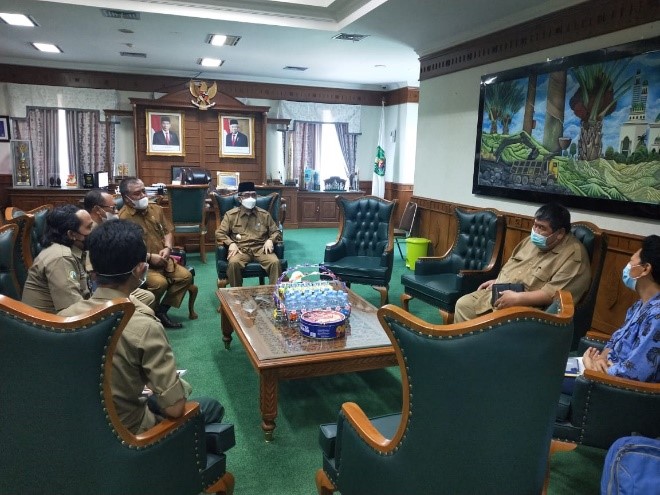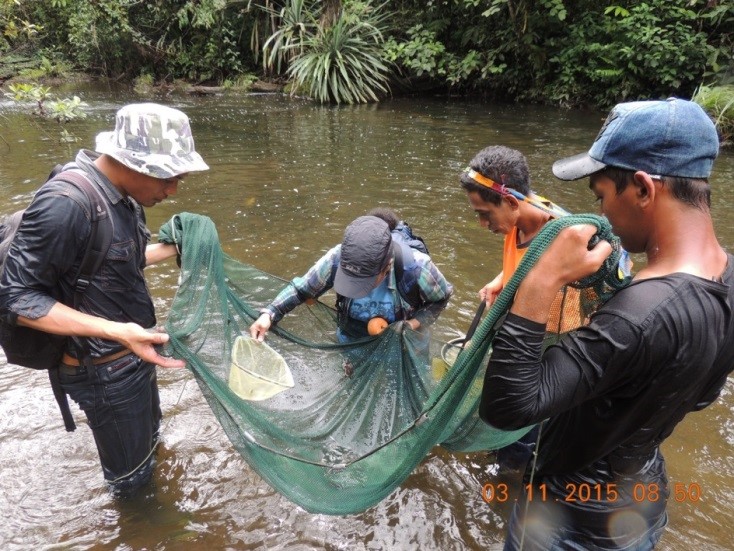Objective of this project is to rehabilitate proboscis monkey habitat, as part of maintaining Danau Mesangat and Kenohan Suwi Wetland Esential Ecosystem which is important for water precipitation, flood control, habitat for wildlife as well as center of inland fisheries. Most information available about proboscis monkey in coastal area, Suwi wetland is about 104 kilometers from est coast of Kalimantan. These multi-year projects funded by Keidanren Nature Conservation Fund (KNCF) Japan.
Yasiwa carried out project ‘Conservation of Proboscis Monkey (Nasalis larvatus) Habitat in Suwi Wetland’ during periode of April 2017 –March 2018, April 2019-March 2020 and April 2020-March 2021. Most of the field work done in cooperation with local fisherman, students of Mathematics and Science Faculty of Mulawarman University. Local fishermans are knowledgeable group and who should get the most benefit since they are the ones who lost their livelihood. Yasiwa concern to give opportunity to the students to gain field experience and motivate graduates working on field conservation.
1.Proboscis Monkey survey
Initial study of proboscis monkey done by Tri Atmoko, S.Hut., M.Si, expert from BALITEK (Research and Conservation Technology Development of Natural Resources Agency under Ministry of Forestry), Periodic survey during the project develop in informations :
-
- Twelve groups of proboscis monkey found, 6 groups in upstream, 5 groups in downstream and 1 group in Loa Bekara.
- Identified 12 food plants among 60 plant species, with the highest score is Litsea oppositifolia and the second is Barringtonia acutangula.
- Recommend to plant Malllotus sumatranus, Baringtonia acutangula and Syzygium lenietum beside Dillenia excelsa for habitat rehabilitation.
- The peak hour of activities is 4 to 6 pm.
- Group structure dominated by infant (41%)
- The most time spend for feeding (35%) based on observation from 6 am – 7 pm
2. Birds and mammals monitoring
Regular monitoring and student field work got 13 mammals, 95 birds, 10 reptilians, and 38 fishes records during project period.
3. Community Training
Transfer knowledge from researcher to students for proboscis monkey observation and basic skill for measure and release Siamese crocodile for fisherman. Training has coverage local stakeholder to addressed threats against habitat and existence of proboscis monkey in Suwi wetland.
4. Replanting and maintenance
Planted cutting more than 5000, mostly Dillenia excelsa, food plant of Proboscis Monkey and has wide leaf to create shade for controling the invasive Mimosa pigra. Planted fruit trees 16 in drier river bank.
5. Conservation Education
Two training for teachers surrounding the wetland to develop understanding about wetland.
First training (2017): consist of field observation, group discussion, presentation, environmental games and provide biodiversity poster, to enable the teacher to introduce biodiversity to the student. Direct observation to the wetlands is the first experience for most of the participant even though they live next to the wetland.
Second Training (2019) consist of guidance from Education Office of East Kutai District, how to develop extracurricular lesson plans about the wet lands
Information center initiated to support learning process for student and teacher. Information center development and training has been held in cooperation with Ulin Foundation.



